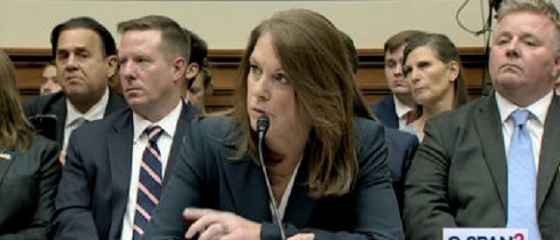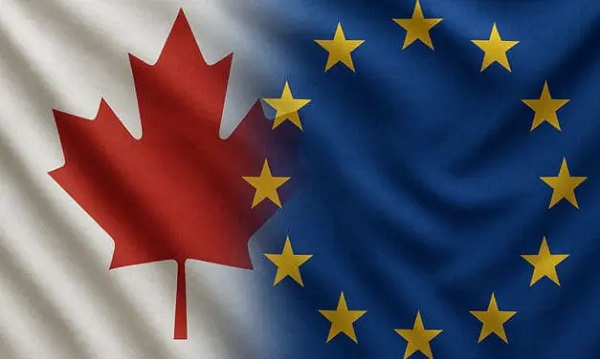International
Secret Service Repeatedly Rejected Offers To Use Drones At Deadly Trump Rally, Whistleblower Says

 U.S. Secret Service Director Kimberly Cheatle appears before the House Oversight Committee on July 22, 2024. (Screenshot / C-SPAN 2)
U.S. Secret Service Director Kimberly Cheatle appears before the House Oversight Committee on July 22, 2024. (Screenshot / C-SPAN 2)
From the Daily Caller News Foundation
By JAKE SMITH
A whistleblower is alleging that the U.S. Secret Service declined to use drones at the deadly Pennsylvania rally for former president Donald Trump on July 13, even though the technology was repeatedly offered by local law enforcement, Republican Missouri Sen. Josh Hawley said on Thursday.
The Secret Service has fallen under intense scrutiny for failing to prevent a gunman from opening fire and attempting to assassinate Trump at the July 13 rally. Amid a series of reported operational failures, Hawley revealed in a letter to the Department of Homeland Security (DHS) on Thursday that a whistleblower had told him that the Secret Service repeatedly rejected offers from law enforcement in Pennsylvania to utilize drones for security purposes.
“The night before the rally, U.S. Secret Service repeatedly denied offers from a local law enforcement partner to utilize drone technology to secure the rally. This means that the technology was both available to USSS and able to be deployed to secure the site. Secret Service said no,” Hawley wrote in his letter to DHS Secretary Alejandro Mayorkas on Thursday. “The whistleblower further alleges that after the shooting took place, USSS changed course and asked the local partner to deploy the drone technology to surveil the site in the aftermath of the attack.”
Hawley wrote in the letter that the whistleblower also told him that the drone technology that was allegedly offered to the Secret Service had the capability to “neutralize” potential threats as well as monitor them.
“It is hard to understand why USSS would decline to use drones when they were offered, particularly given the fact USSS permitted the shooter to overfly the rally area with his own drone mere hours before [the] event,” Hawley wrote in the letter. The gunman, 20-year-old Thomas Crooks, flew a drone over the rally site hours before the event began to scope out the area.
The Secret Service has been widely criticized for its failure to stop Crooks from nearly killing Trump. Crooks was able to climb onto the roof of a building just hundreds of feet away from the rally and shoot Trump without being stopped by law enforcement or the Secret Service, even though they were made aware of his presence roughly 50 minutes before the former president took the stage.
Former Secret Service Director Kimberly Cheatle resigned on Tuesday after being berated by Republican and Democratic lawmakers for her failure to ensure that the rally would be safe.
The Secret Service did not immediately respond to a request for comment.
(Featured image credit: Screenshot / C-SPAN 2)
Crime
Minnesota shooter arrested after 48-hour manhunt

 MxM News
MxM News
Quick Hit:
Vance Luther Boelter, accused of killing former Minnesota State House Speaker Melissa Hortman and her husband, was captured Sunday after leading law enforcement on a 48-hour manhunt.
Key Details:
-
Boelter allegedly began his rampage around 2 a.m. Saturday at Sen. Hoffman’s Champlin home, shooting both the senator and his wife, Yvette. The couple survived after emergency surgery.
-
He then traveled to Rep. Melissa Hortman’s Brooklyn Park home, where she was pronounced dead at the scene and her husband died shortly afterward at a hospital.
-
The suspect reportedly sent a farewell message to friends before fleeing and was later arrested in a Sibley County field Sunday night.
Sources provided this photo of Boelter from the scene after his arrest. pic.twitter.com/q4F9uPkm53
— Liz Collin (@lizcollin) June 16, 2025
Diving Deeper:
Vance Luther Boelter, the man accused of carrying out a targeted shooting of Democrat lawmakers in Minnesota, was taken into custody Sunday night following a 48-hour manhunt that spanned multiple counties. According to a report from Alpha News, Boelter was arrested in a field in rural Sibley County after evading police for more than a day following the deadly shootings.
Boelter, 57, previously served as an appointee under Gov. Tim Walz and is accused of murdering former Minnesota House Speaker Melissa Hortman and injuring State Senator John Hoffman and his wife, Yvette. Authorities say Boelter disguised himself as a police officer—complete with a uniform, ballistic vest, and Halloween mask—before launching the coordinated attacks early Saturday morning.
The violence began just after 2 a.m. when Boelter allegedly entered the Hoffman residence in Champlin and opened fire. Both the senator and his wife were struck multiple times. Their daughter, Hope, was reportedly shielded from the gunfire by her mother. The couple’s nephew confirmed that both John and Yvette Hoffman underwent surgery and were listed in stable condition by Sunday.
From there, Boelter allegedly drove to Brooklyn Park and carried out a second attack at the home of Speaker Emerita Hortman. The 55-year-old lawmaker was found dead inside the home, while her husband was transported to a hospital where he later succumbed to his injuries.
Brooklyn Park police officers, alerted by the earlier incident, arrived as Boelter was leaving the Hortman residence. A standoff ensued, with officers briefly cornering the suspect inside the house and opening fire, though Boelter managed to flee.
Boelter reportedly sent a chilling text message to close friends. “David and Ron, I love you guys. I made some choices, and you guys don’t know anything about this, but I’m going to be gone for a while,” he wrote. “May be dead shortly, so I just want to let you know I love you guys both and I wish it hadn’t gone this way.”
Energy
Could the G7 Summit in Alberta be a historic moment for Canadian energy?

From Resource Works
Canada can be the democratic world’s top energy supplier, and the G7 Summit in Alberta is the perfect time to commit to that.
Canada is at the crossroads of opportunity as the leaders of the G7 convene in Kananaskis, Alberta.
An Ipsos poll has named Canada the top preferred oil supplier among G7 countries for the second time since 2023. No less than 68 percent of G7 respondents declared that Canada was among their top three choices to supply oil.
This should be yet another motivator for Canada to solidify itself as a key player in energy security and economic stability among the democratic nations.
The timing and location of this year’s G7 summit shows how important Canada can be to the world. Alberta, Canada’s energy heartland, is the source of nearly all of the country’s oil, and the provincial government wants more of it to reach global markets.
Those geopolitical anxieties caused by Russia’s invasion of Ukraine in 2022 have not disappeared, and Canada’s allies and partners like the European Union (EU), Japan, South Korea, and India are looking for a reliable and responsible partner to supply them with energy, and we are the best and most obvious choice.
Willing partners are easy to find overseas, but the other provinces and the federal government need to become equally enthusiastic first.
There is more to this than mere symbolism. Canada embracing its position as the most desirable supplier of oil makes complete sense.
In 2023, Ipsos found that Canada’s political stability, comprehensive environmental rules, and strong regulatory frameworks are why it ranked first among preferred oil suppliers. Norway is another popular option, but Canada has the advantage of better market access to the United States and the Asia-Pacific, along with established infrastructure and an open government.
It all combines to create a distinct advantage for Canada in the world of trade.
The US has slid as a popular oil supplier, to Canada’s advantage, and we need to capitalize on that more than ever.
As Russia’s bloody, disruptive war with Ukraine continues to drag on, the EU still needs sources of alternative energy to make a clean break with Moscow. Russia had previously served as the bloc’s effective gas station, albeit one armed with nuclear weapons.
G7 member states like Britain and the EU are looking to slap even stricter limits on Russian energy exports that go beyond what is already in place. Whatever Russia has to lose is Canada’s to gain.
Canada began to enlarge its export capacity last year with the completion of the twinning of Trans Mountain pipeline (TMX), enabling Canada to double the amount of oil it can pipe to Pacific markets. Shipping larger amounts of Canadian energy to partners in Japan, India, South Korea, and others has never been easier.
It was a monumental example of how investing in the right sorts of infrastructure can improve economic security, both nationally and internationally. Internally, developing the oil industry is a long term goal of First Nations leaders and communities.
The myth of First Nations opposing the expansion of oil and gas is one that needs to die. The Indian Resource Council, which represents over 130 First Nations, has repeatedly championed the responsible development of natural resources as a means of fostering economic independence and community renewal.
Many First Nations and other Indigenous groups have invested heavily into pipelines, production sites and storage facilities, and want to expand it further. In terms of pure economic value, there is not another industry that has created more wealth in Indigenous communities across Western Canada.
Complacency from the federal government and other authorities at this time could not be timed more poorly as the G7 Summit comes to Alberta. When the gathering ends on June 17, we should hope that it was a turning point where Canada made a direct and clear commitment to modernizing and expanding its oil and gas sector.
Our role in the world can be that of the great democratic alternative to Russia when it comes to supplying energy and other resources. Alberta knows it, as do our allies and Indigenous people across Canada.
Ottawa should listen. It is time to realize our potential to be an even greater energy superpower.
Through that, we can reduce the power of authoritarian, hostile regimes in the world by building a stronger, more unified Canada.
-

 Health2 days ago
Health2 days agoRFK Jr. purges CDC vaccine panel, citing decades of ‘skewed science’
-

 Business1 day ago
Business1 day agoEU investigates major pornographic site over failure to protect children
-

 Canadian Energy Centre1 day ago
Canadian Energy Centre1 day agoCross-Canada economic benefits of the proposed Northern Gateway Pipeline project
-

 Alberta1 day ago
Alberta1 day agoAlbertans need clarity on prime minister’s incoherent energy policy
-

 Economy1 day ago
Economy1 day agoCarney’s Promise of Expediting Resource Projects Feels Like a Modern Version of the Wicked Stepmother from Disney’s Cinderella
-

 Crime1 day ago
Crime1 day agoManhunt on for suspect in shooting deaths of Minnesota House speaker, husband
-

 Business20 hours ago
Business20 hours agoCarney’s European pivot could quietly reshape Canada’s sovereignty
-

 conflict6 hours ago
conflict6 hours ago“Evacuate”: Netanyahu Warns Tehran as Israel Expands Strikes on Iran’s Military Command






